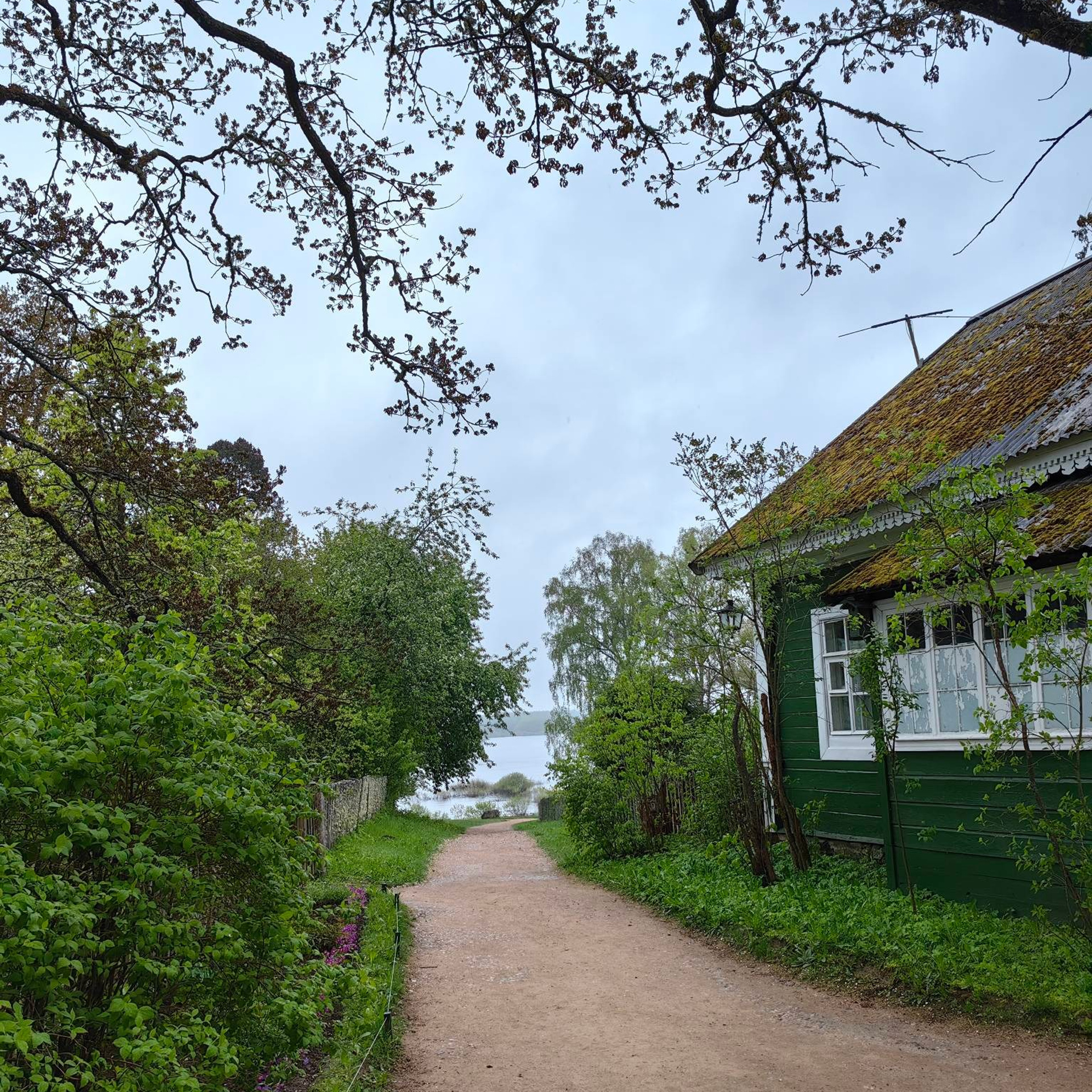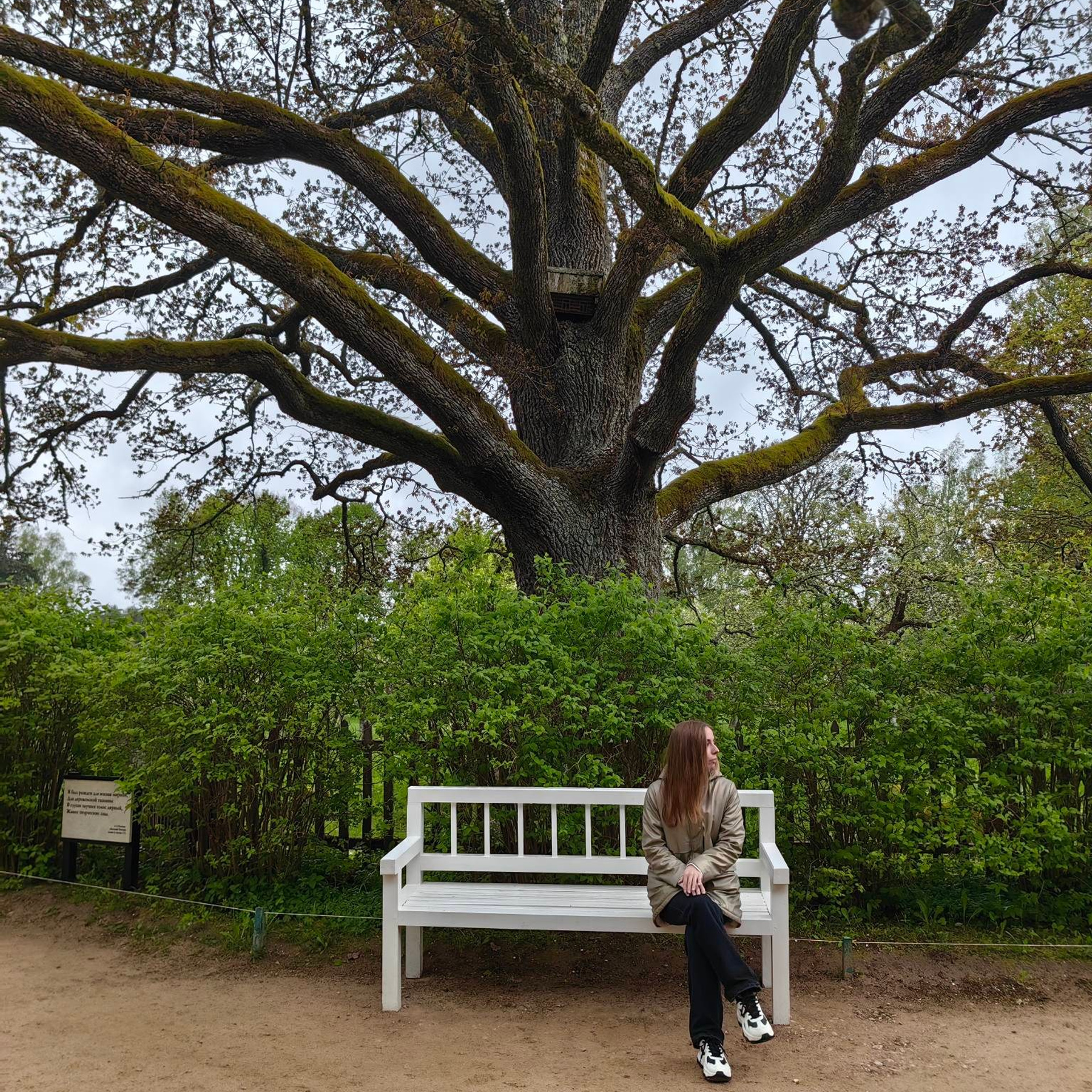A bit of history
In 1824, Alexander Sergeyevich Pushkin was exiled to the Mikhailovskoye family estate. The reason was his free-thinking and atheistic views, which he expressed in a letter to a friend. In Mikhailovsky, Pushkin continued his work on “Eugene Onegin, ” which he had begun in his first southern exile. Here he also created Boris Godunov and wrote many poems. He was often visited by friends who brought him fresh news from the capital and fresh literature. It was Ivan Pushchin, one of his close friends, who presented Pushkin with Griboyedov’s book “Woe from Wit”, which made an indelible impression on the poet.
Many of Pushkin’s friends were associated with the Decembrist movement, and he himself shared their views. Perhaps if he had not been in exile, he would have taken part in the uprising. In memory of his Decembrist friends, he created many poems, including “In the Depths of the Siberian Ores.” During this period, Pushkin wrote two famous poems: “Arion” (1827) and “Anchar” (1828).
Pushkin’s Mikhailovsky exile ended in 1826, when he was unexpectedly summoned by Nicholas I. Moscow. They came to a reconciliation, according to which Nicholas released the poet and became his sole censor, and Pushkin, in turn, became more loyal to the authorities.
The story of My painting
In the spring, I visited Pushkinsky Mikhailovsky, and this place made an indelible impression on me. For two years, the poet has been creating in these open spaces, and if you find yourself here, be sure to take a tour and take a walk around the territory. This place is very picturesque and incredibly inspiring. As you have already understood, my painting is dedicated to Pushkin’s exile in Mikhailovsky. The environment had a huge influence on the formation of the poet’s personality, and in his work one can see all the subtleties and details of his environment. The whole setting here is like a backdrop for Eugene Onegin, and it feels like you’re on stage and walking around the scenery.
My painting is dedicated specifically to the poet’s exile and work, where the environment played a significant role. It all starts with the poet’s study, the place where the works of that period were created. The golden leaves scattered through the air, and some fell onto the carpet. Anna Kern, flying by, left her mark. The portrait of the ancestor, flying off the wall, opens the door to the painting, and we begin to soar along with the creative process. There are two modern objects in the painting: the Alice smart speaker and the Mamiya C330 camera. These are my assistants who were with me during the creation of the painting. I start with a grisaille and use a large brush to reveal the entire canvas. I intentionally leave the right part of the painting unscripted in order to create the effect of developing from a white canvas that does not carry any information to a pasty painting. This gives the painting volume, time on the plane of the canvas, and all the objects seem to be in easy motion. A creative mix is created, in which works of art are born.
История усадьбы Михайловское Усадьба
Михайловское — одно из самых знаковых мест, связанных с жизнью и творчеством великого русского поэта Александра Сергеевича Пушкина. Расположенная в Псковской области, эта усадьба стала не только домом для поэта, но и источником вдохновения для многих его произведений. Вот основные вехи её истории:
Основание усадьбы
Усадьба Михайловское была основана в XVIII веке. Земли, на которых она расположена, были пожалованы императрицей Елизаветой Петровной прадеду Пушкина — Абраму Петровичу Ганнибалу, арапу Петра I, ставшему видным военным инженером и государственным деятелем. — Название усадьбы происходит от имени сына Ганнибала — Михаила, который унаследовал эти земли.
Пушкин в Михайловском
Александр Пушкин впервые посетил Михайловское в 1817 году, после окончания Лицея. Однако наиболее значимый период его жизни здесь связан с ссылкой 1824–1826 годов.
В 1824 году Пушкин был отправлен в ссылку в Михайловское по распоряжению императора Александра I за свои вольнодумные стихи и близость к кругам декабристов. В Михайловском Пушкин провёл два года, которые стали одним из самых плодотворных периодов его творчества. Здесь он написал: главы из «Евгения Онегина», трагедию «Борис Годунов», поэму «Граф Нулин», множество стихотворений, включая «Я помню чудное мгновенье…», посвящённое Анне Керн. В этот период Пушкин находился под негласным надзором. Его часто навещали друзья, которые приносили ему свежие новости из столицы и свежую литературу. Именно Иван Пущин, один из его близких друзей, подарил Пушкину книгу Грибоедова «Горе от ума», которая произвела на поэта неизгладимое впечатление.
Многие друзья Пушкина были связаны с декабристским движением, и сам он разделял их взгляды. Возможно, если бы он не был в ссылке, то принял бы участие в восстании. В память о своих друзьях-декабристах он создал множество стихотворений, среди которых «Во глубине сибирских руд». В этот период Пушкин написал два знаменитых стихотворения: «Арион» (1827) и «Анчар» (1828).
Михайловская ссылка Пушкина завершилась в 1826 году, когда его неожиданно вызвал к себе Николай I в Москву. Они пришли к примирению, согласно которому Николай освободил поэта и стал его единственным цензором, а Пушкин, в свою очередь, стал более лояльным к власти.
После Пушкина
После смерти Пушкина в 1837 году усадьба перешла к его детям. Однако со временем она пришла в упадок. — В 1899 году, к 100-летию со дня рождения поэта, усадьба была выкуплена государством. Начались работы по восстановлению и сохранению памяти Пушкина.
XX век и современность
В1911 году в Михайловском был открыт первый музей, посвящённый Пушкину.
Во время Великой Отечественной войны усадьба была практически полностью разрушена. Немецкие войска сожгли дом и другие постройки.
После войны началось активное восстановление усадьбы. К 1949 году, к 150-летию со дня рождения Пушкина, Михайловское было восстановлено и открыто для посетителей.
Сегодня Михайловское является частью музея-заповедника А. С. Пушкина, который включает также усадьбы Тригорское и Петровское, а также Святогорский монастырь, где похоронен поэт.
Архитектура и природа усадьбы
Усадьба расположена в живописном месте на берегу реки Сороть. Её окружают леса, луга и парки, которые вдохновляли Пушкина. Восстановленный господский дом воссоздаёт атмосферу пушкинской эпохи. В нём представлены личные вещи поэта, мебель и книги.
На территории усадьбы находятся: Домик няни (Арины Родионовны), где жила няня Пушкина. Аллея Керн, названная в честь Анны Керн. Еловая аллея, посаженная ещё при жизни Пушкина.
Культурное значение
Михайловское это не просто музей, а место, где оживает история русской литературы. Сюда приезжают туристы, исследователи и поклонники творчества Пушкина со всего мира. Ежегодно в усадьбе проводятся Пушкинские праздники поэзии, которые собирают тысячи гостей.
Интересные факты
В Михайловском Пушкин написал более 100 произведений. Усадьба упоминается в письмах поэта как место, где он чувствовал себя свободным, несмотря на ссылку.
В Святогорском монастыре, расположенном рядом с усадьбой, Пушкин часто бывал и работал в архивах. Там же он был похоронен после дуэли в 1837 году. Михайловское это не только памятник истории, но и место, где можно почувствовать дух эпохи Пушкина, понять, как природа и уединение вдохновляли великого поэта на создание бессмертных произведений. Сайте усадьбы вы можете найти всю нужную информацию
История Моей картины
Весной я побывал в пушкинском Михайловском, и это место произвело на меня неизгладимое впечатление. Два года поэт творил на этих просторах, и если вы окажетесь здесь, обязательно возьмите экскурсию и прогуляйтесь по территории. Это место очень живописно и невероятно вдохновляет. Как вы уже поняли, моя картина посвящена ссылке Пушкина в Михайловском. На формирование личности поэта огромное влияние оказала окружающая среда, и в его творчестве можно увидеть все тонкости и детали его окружения. Вся обстановка здесь словно фон для Евгения Онегина, и кажется, что ты попал на сцену и ходишь вокруг декораций. Моя картина посвящена именно ссылке и творчеству поэта, где окружение сыграло значительную роль. Все начинается с рабочего кабинета поэта — места, где создавались произведения того периода. Золотые листки разлетелись по воздуху, а некоторые упали на ковер. Анна Керн, пролетая мимо, оставила свой след. Портрет предка, слетев со стены, словно открывает дверь в картину, и мы начинаем парить вместе с творческим процессом. На картине присутствуют два современных предмета: умная акустическая колонка Алиса и фотоаппарат Mamiya C330. Это мои помощники, которые были со мной во время создания картины. Я начинаю с гризайли и большой кистью раскрываю весь холст. Правую часть картины я намеренно оставляю незаписанной, чтобы создать эффект проявления от белого холста, не несущего никакой информации, до пастозной живописи. Это придаёт картине объём, время на плоскости холста, и все предметы словно находятся в лёгком движении. Создаётся творческий замес, в котором рождаются произведения искусства.
Усадьба Михайловское находится в Псковской области рядом с поселком Пушкинские горы. От Пскова можно доехать на автобусе или на машине. Бесплатная стоянка находится в 1,5 километрах от усадьбы А. С. Пушкина. Билеты можно купить на сайте музея
News

Auction in KupolGallery

The M. V. Nesterov Museum in Ufa

Shakhmatovo manor

Cosmoscow 2024

Bolshye Vyazemy Manor

Exhibition Kupol Galery

Plein air in Peredelkino

Plein air-master class

Дом с консольными выносами

Усадьба Остафьево

Кириллов

The house in Renaissance Park 1080 sq. m.

Дом в Карелии 2500 квм

Загородный дом 2000 кв. м. Григорианского стиль



































